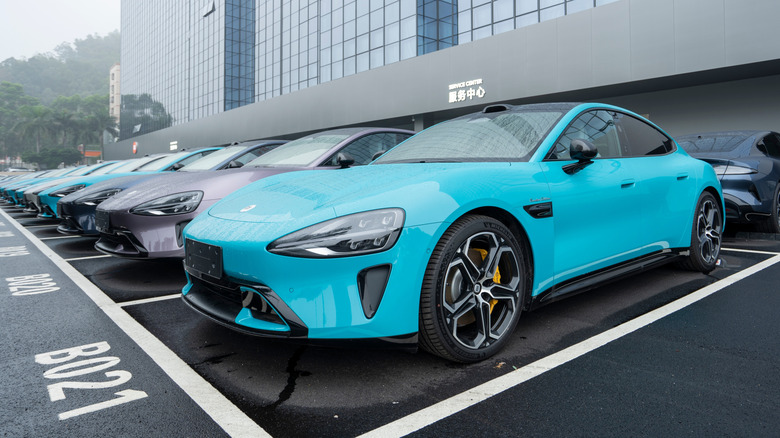
In the United States, Tesla is charging $44,200 for an entry-level Model 3–– but in Asia, Chinese automakers are producing EVs that cost less than a used Honda Civic. These aren't niche experiments into the world of electric mobility either; one of the cars on this list sold over a million units in just two years. However, when you consider the fact that this best-selling mystery vehicle costs six times less than Tesla's cheapest offering – under $8,000 – it's easy to understand why the market is booming.
The Chinese government offers several incentives to EV buyers, making "new energy" vehicles, as they are called, quite attractive.
In addition, the charging infrastructure in most populated cities in China is quite robust, with many different types of chargers available -- all reasons why China is far ahead of the U.S. in terms of EV infrastructure. China's EV space has outgrown the teething problems that many other EV markets around the world are facing. That said, before you start looking at shipping container costs, understand that these prices reflect the Chinese domestic market. Import tariffs, safety certifications, and various regulatory hurdles would dramatically increase costs for American buyers. However, even when we factor in 25% tariff prices as well as the 2.5% import duty, most Chinese EVs would still be cheaper than the base 2025 Tesla Model 3. Here are five examples.
Read more: 9 Cheap Cars That Look Expensive
BYD Seagull - ¥56,800 Or $7,800
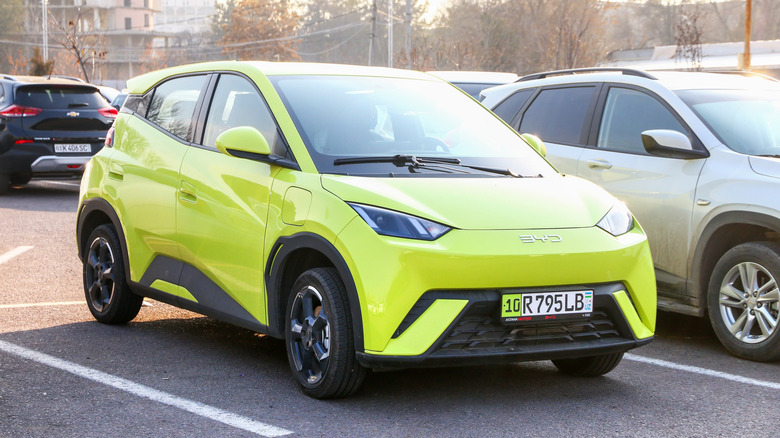
First up, we have the BYD Seagull -- one of China's best-selling all-electric vehicles. It costs $7,800 (¥56,800), which, as we alluded to in the introduction, makes it about six times cheaper than the cheapest Tesla. However, even though we don't get the Seagull/ Surf here in the U.S., you can still ditch your Tesla Model 3 in favor of better options. Interestingly, the Seagull is so much of a "common person car" that it, along with all other cars under 4 meters (13.1 feet) long, are banned from driving in Shanghai, as it's seen as too plebeian to be seen on Shanghai's streets.
In our books, that's more of a compliment than anything. An EV so affordable that the powers that be think it'll paint their city as "cheap" -- if that's not a win on pricing, then what is? Another interesting tidbit about Shanghai is that cars that are not registered in the city, i.e., cars that do not have Shanghai plates, are also banned from driving in parts of the city.
Anyway, the Seagull, also called the Dolphin Surf in some places, is good value -- it has seating space for five people, a range of 190 miles, and a 30.1 kWh battery. All of these factors combine to make the Seagull one of China's most popular cars, a fact that is evidenced by the one millionth Seagull unit being sold in June 2025, just 27 months from the date it was launched.
XPeng MO3 - ¥129,800 Or $18,100
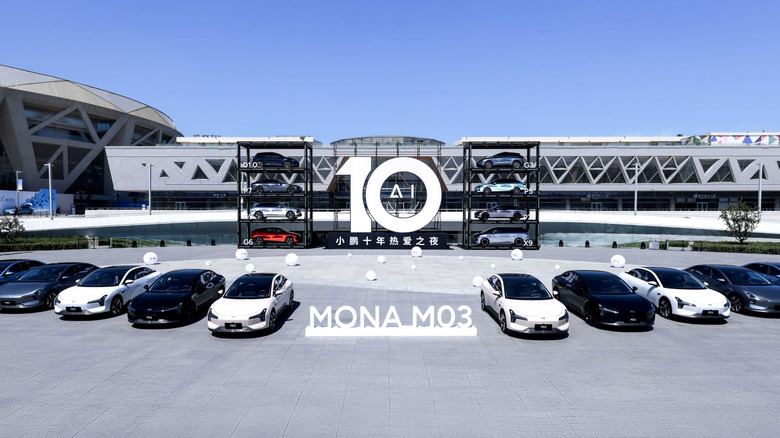
Next, a car called the MO3, made by a company that not a lot of people will have heard of -- XPeng. This EV was released in 2024, and has garnered a decent amount of sales, becoming the brand's best seller. The entry-level M03 comes with a 51.8 kWh battery system that powers one forward-mounted motor, giving it a range of 311 miles (500 km) on a single charge. This is impressive on its own, but when compared to the base Tesla Model 3's claimed range of 272 miles, the MO3's endurance is nothing less than stellar.
Storage space in the boot is decent, coming in at 621 liters (22 cubic feet) with the second row of seats upright, and 1,602 liters (57 cubic feet) with them down, and the rear seats are standard 60/40 folding, which most buyers will be familiar with. In addition, the rear seats also feature an adjustable headrest, can be manually reclined, and have ISOFIX (the equivalent of LATCH in the U.S.) mounting points for car seats. The car also boasts an impressive technology suite, as even the base variant comes with a 15.6-inch infotainment system, and though it is an AI-powered car, a quirky standout feature is the lack of any gauge instrumentation behind the steering wheel. All of this comes standard in a package that costs just $18,100 (¥129,800) brand new.
Xiaomi SU7 - ¥215,900 Or $30,089
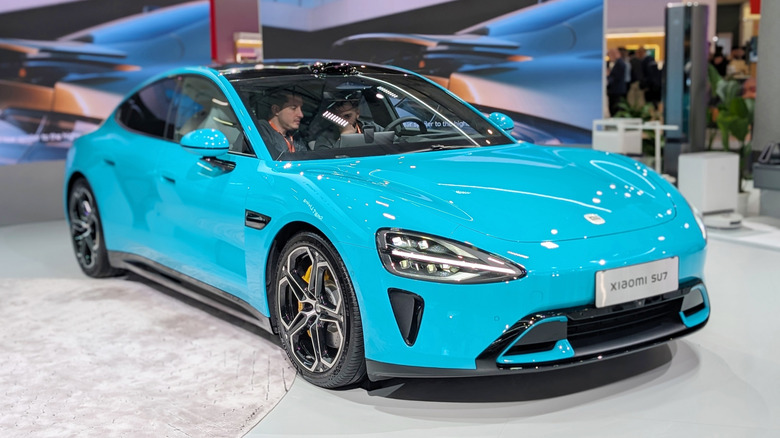
Probably the most famous Chinese EV is this next one, the SU7 sedan, made by Xiaomi, a company that made a name for itself by selling budget-friendly Android smartphones. Admittedly, the current talk of the town is the SU7's $73,000 performance version -- called the SU7 Ultra, which is often compared to the Tesla Model S -- as it is certainly one of 2025's fastest cars that cannot be bought in the U.S., but the base version is still pretty amazing. The entry-level variant costs $38,089 (¥215,900) at current exchange rates, has a 16.1-inch touchscreen, a 56-inch heads-up display, and comes with a 73.6 kWh battery system that powers a single electric motor mounted on the rear axle. However, more expensive variants can choose from either a 94.3 kWh or a 101 kWh battery pack, with a 150 kWh model rumored to be in the works.
Among the SU7's biggest innovations is its battery system, as the floor itself is now the battery housing. This is possible thanks to a system that Xiaomi is calling "Cell-to-Body" technology, which has the main benefit of making the car's chassis a lot more rigid and stiff, as well as increasing usable space in the cabin. However, it's not a perfect vehicle, with testers reporting that the car suffers from excessive-but-tolerable road noise, and that the usable range is much lower -- about 280 miles -- versus the 430 miles (700 km) initially claimed.
Zeekr 7x - ¥229,900 Or $32,000

The next car on our list is a smallish sports and utility vehicle -- for that's what SUV stands for -- and is called the 7X, built by a company named Zeekr -- pronounced "Zeeker." It commands somewhat of a premium price -- for the Chinese market at any rate -- coming in with a base price of $32,600 or ¥229,900. Buyers do get a solid feature package, including Zeekr's "Magic Ride" suspension consisting of double wishbones at the front with independent rear units, a 13.02-inch touchscreen display, 70 cubic feet of trunk space with the rear seats down, and the ability to turn the front passenger seat into a bed.
Power for the Zeekr 7X comes from a single 310 kilowatt motor mounted to the front axle, which is fed by a battery system that has a capacity of 75 kWh. Higher and more expensive variants of the 7X do get a bigger 100kWh battery, as well as an 800-volt charging platform being used across the board. In terms of range, the entry-level 7X is rated for 298 miles (480 kilometers) of range as per the official website. It is a fairly popular offering in the Chinese market, having sold more than 35,000 within three months of its launch. Another achievement that the Zeekr can boast of is that it sold 20,000 non-cancelable orders for the 7X SUV within 18 days of the model launching -- that's more than 1,100 orders per day.
Li Auto L6 - ¥249,800 Or $34,800
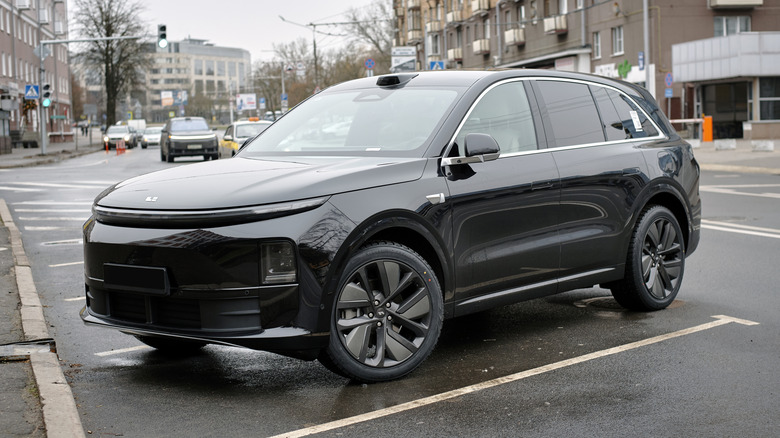
Now, the Li Auto isn't a pure EV per Chinese standards, as it falls into the EREV, or range-extended electric vehicle -- basically a PHEV on steroids. Its base MSRP in China is about $34,800 (¥249,000), so when we factor in a 25% tariff of $8,700, as well as a 2.5% import duty of $870, it's still cheaper than the Tesla. The powertrain is quite robust, consisting of a 36.8 kWh battery that feeds into dual motors -- one on each axle for the base variant, in addition to a turbocharged 1.5-liter minimal emissions engine. This setup gives the L6 a comprehensive range of 1,390 miles, and a pure-EV range of 182 miles per charge. It's mind blowing that such a car is cheaper than a Tesla.
The Li Auto L6 is very much considered a luxury electric vehicle, as the median wage in China currently stands at about $16,000 (¥120,000), meaning that it will cost the average person two years' pay to buy a Li Auto L6. However, for those who can afford to purchase one, it is incredible value given its looks, materials, finishing, and features. Couple those with China's mature EV charging infrastructure as well as government grants and subsidies for "new energy" vehicles, and you've got a match made in heaven. Back home, we're seeing the removal of the EV tax credit, and can only hope for affordable electric mobility, for the moment.
Want the latest in tech and auto trends? Subscribe to our free newsletter for the latest headlines, expert guides, and how-to tips, one email at a time.
Read the original article on SlashGear.













